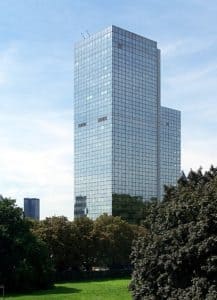By Jessica Ashley Merkley
Metrolinx, an agency created to improve modes of transportation in the GTA as well as the Hamilton Area, has now revealed their ambitious and detailed plan that will be ongoing, with a set date of completion for 2041.
The Regional Transportation Plan (RTP) was revealed this past week and is one of great ambition seeing as it is slated to involve 100 projects that will, in the end, result in better connectivity across the Greater Toronto Area and surrounding regions. The agency, which falls under the Government of Ontario’s Metrolinx Act of 2006, was created as a means to ease congestion on roadways and to offer alternative options to commuters.
Phil Verster, CEO of Metrolinx, spoke to the board about the importance of this plan’s approval, on March 8, 2018.
“This is a very important day,” Verster said. “It shows what good looks like.”
The RTP for 2041 was developed as a continuation of the initial plan and its success, termed “The Big Move.” Released in 2008, this first plan was the catapult to a $30 billion investment in rapid transit and resulted in a total of nine project completions of transit initiatives and projects. These include, Davis Drive BRT, the Mississauga Transit-way, running from Winston Churchill Boulevard and Renforth Drive, the Highway 7 bus rapid transit, running between Yonge Street and Unionville GO Station, in addition to the UP Express between Union Station and Pearson Airport.
The outline of the RTP’s focus first deals with the completion of current rapid transit projects, such as those scheduled for completion based on “The Big Move.” The plan considers such projects “in development,” and developers are keen to first finalize these.
Additionally, the RTP is set on connecting a larger portion of the region with rapid transit. The GO RER, and subway lines are slated to be the backbone to those in the works and the intended network will bring connectivity to regional destinations, such as popular urban areas and high-density places of employment. This will be achieved by way of a light rail transit system, in addition to bus rapid transit lines (BRT), as well as express bus services offered more frequently and giving priority to those who need the services most.
Metrolinx’s RTP plan is also meant as a means to get the most optimal use out of the current transportation system by interconnecting the various options of transit by also offering the same cost and integrating the fares to passengers. Improving the ease with which commuters find their final destination from terminal and stations, by making stations more accessible for cycling, walking, pick-up and drop-off, in addition to carpooling, also makes its way into this section of the RTP.
The plan intends to gain the backing of municipalities to work on a unified front and optimize land-use, as well as transportation. In addition, the RTP allows for alterations to the set outlook, for what is termed an “uncertain future.”
Transportation and connectivity for commuters is to be improved vastly due to these set plans, over the upcoming decades.
http://www.metrolinx.com/en/regionalplanning/rtp/

